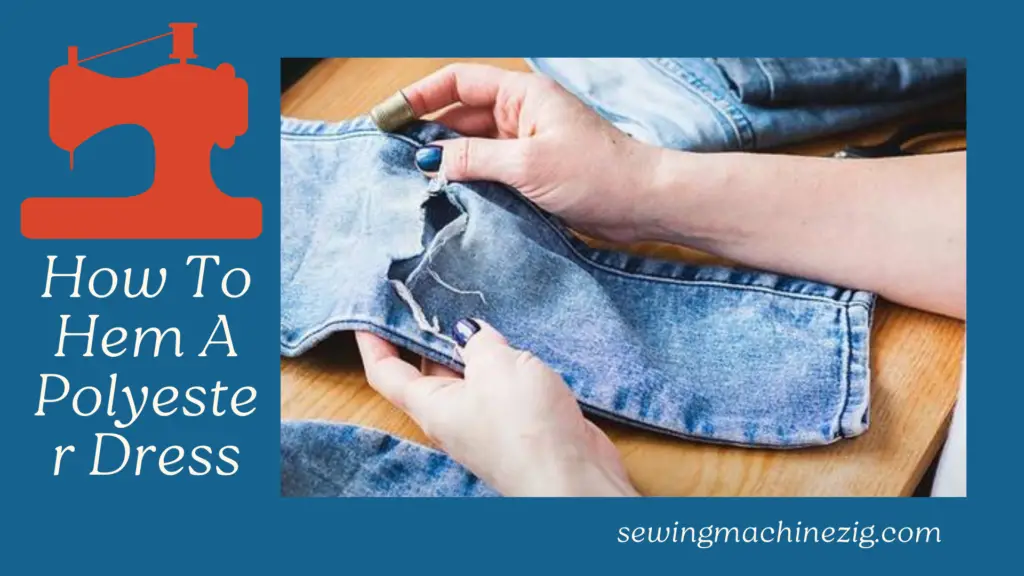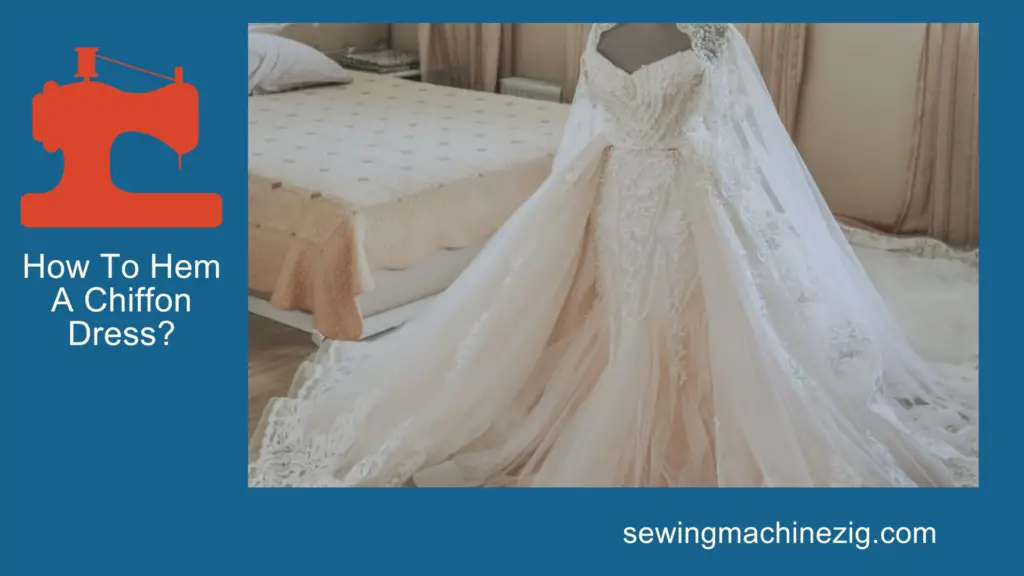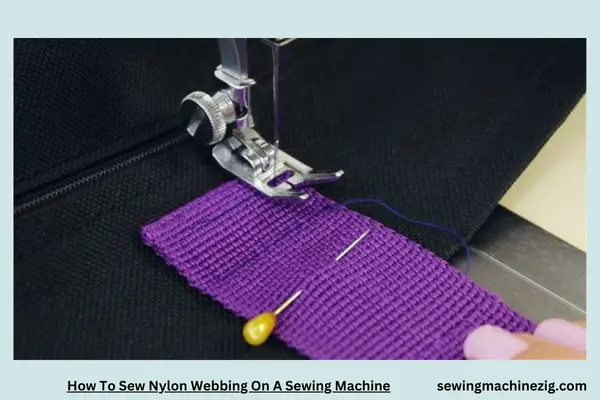
Sewing nylon webbing is a useful skill for a variety of projects, from outdoor gear and bags to pet accessories and more. Knowing how to sew nylon webbing on a sewing machine allows you to create strong and reliable seams that can withstand significant stress. Whether you’re an outdoor enthusiast, a DIY enthusiast, or simply need to repair nylon webbing, this guide will walk you through the steps to accomplish this task with ease.
In this article, we’ll explore the techniques and tips to sew nylon webbing effectively using a sewing machine, ensuring your projects are both durable and functional.
How To Sew Nylon Webbing On A Sewing Machine Detailed Answer
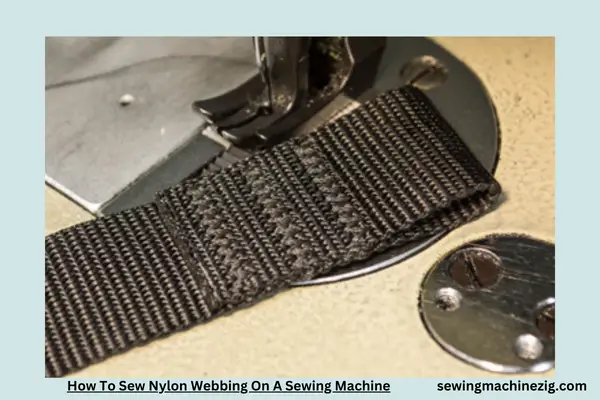
Sewing nylon webbing is a useful skill for various projects, including outdoor gear, bags, straps, and more. With the right techniques and equipment, you can create strong and durable seams. In this step-by-step guide, we’ll walk you through how to sew nylon webbing on a sewing machine.
Materials You’ll Need:
- Sewing machine
- Nylon webbing
- Thread (polyester or nylon)
- Sharp needles (size 14/90 or 16/100)
- Heavy-duty presser foot
- Straight pins
- Measuring tape
- Scissors
- Lighter (for sealing the ends of nylon webbing)
Step 1: Thread Your Machine
Begin by threading your sewing machine with the appropriate thread. Polyester or nylon thread works best for nylon webbing due to its strength and durability.
Step 2: Choose the Right Needle
Select a sharp needle suitable for heavy fabrics. Needles in sizes 14/90 or 16/100 are ideal for sewing nylon webbing. Ensure your machine is equipped with a heavy-duty presser foot to handle the thickness of the webbing.
Step 3: Prepare the Webbing
Lay out the nylon webbing and measure the length you need for your project. Use straight pins to secure the layers of webbing together, aligning them precisely.
Step 4: Adjust Your Machine Settings
Set your sewing machine to a straight stitch. Adjust the stitch length based on the type of nylon webbing you’re sewing. A longer stitch length works well for lightweight webbing, while a shorter stitch is better for heavy-duty webbing.
Step 5: Start Sewing
Position the webbing under the presser foot, aligning it with the needle. Lower the presser foot to hold the webbing in place. Start sewing slowly, making sure the needle penetrates all layers of the webbing.
Step 6: Backstitch at the Beginning
At the beginning of your seam, backstitch a few stitches to secure the thread. This prevents unraveling over time.
Step 7: Maintain a Steady Pace
As you sew, maintain a steady pace, guiding the webbing through the machine. Keep your fingers away from the needle and presser foot to avoid injury.
Step 8: End with Backstitching
When you reach the end of your seam, backstitch again to secure the thread. Cut the excess thread, leaving a small tail.
Step 9: Seal the Ends
To prevent fraying, carefully use a lighter to seal the cut ends of the nylon webbing. Pass the flame over the end for a moment, then press it against a non-flammable surface to seal.
Step 10: Final Checks
Inspect your seams to ensure they are secure and even. Make any necessary adjustments or resew any areas that may require reinforcement.
Sewing nylon webbing on a sewing machine is a valuable skill that can be applied to a wide range of projects. Whether you’re creating outdoor gear or fashion accessories, mastering this technique will help you achieve professional and durable results. With practice, you’ll become more proficient in handling various webbing thicknesses and sewing tasks.
How to Set Up Your Sewing Machine For Webbing
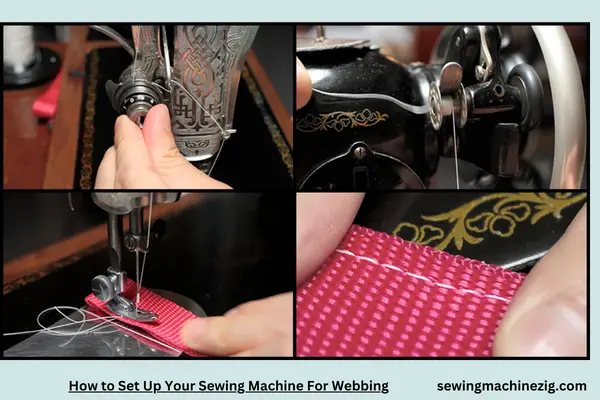
Setting up your sewing machine for webbing projects is essential to ensure strong and durable seams. Whether you’re working on outdoor gear, bags, straps, or any other webbing-based project, this step-by-step guide will walk you through the process of how to sew nylon webbing on a sewing machine.
Materials You’ll Need:
- Sewing machine
- Webbing material
- Thread (polyester or nylon)
- Heavy-duty needles (size 14/90 or 16/100)
- Heavy-duty presser foot
- Straight pins
- Measuring tape
- Scissors
- Lighter (for sealing webbing ends)
Step 1: Thread Your Machine
Begin by threading your sewing machine with suitable thread. For webbing projects, polyester or nylon thread is recommended due to its strength and durability.
Step 2: Choose the Right Needle
Select a heavy-duty needle designed for heavy fabrics. Needles in sizes 14/90 or 16/100 are ideal for sewing webbing. Ensure your machine is equipped with a heavy-duty presser foot to handle the thickness of the webbing.
Step 3: Prepare the Webbing
Lay out the webbing material and measure the length you need for your project. Use straight pins to secure the layers of webbing together, aligning them precisely.
Step 4: Adjust Your Machine Settings
Set your sewing machine to a straight stitch. The stitch length can vary depending on the type and thickness of the webbing. For heavy-duty webbing, a shorter stitch length is suitable, while lightweight webbing may require a longer stitch length.
Step 5: Start Sewing
Position the webbing under the presser foot, ensuring it’s aligned with the needle. Lower the presser foot to hold the webbing securely. Begin sewing slowly, making sure the needle penetrates all layers of the webbing.
Step 6: Backstitch at the Beginning
To secure the thread at the beginning of your seam, backstitch a few stitches. This helps prevent the thread from unraveling over time.
Step 7: Maintain a Steady Pace
As you sew, maintain a consistent pace while guiding the webbing through the machine. Keep your fingers away from the needle and press your foot to prevent accidents.
Step 8: End with Backstitching
When you reach the end of your seam, backstitch again to secure the thread. Trim any excess thread, leaving a small tail.
Step 9: Seal the Ends
To prevent fraying, use a lighter to seal the cut ends of the webbing. Pass the flame over the end for a moment, then press it against a non-flammable surface to seal.
Step 10: Final Checks
Inspect your seams to ensure they are secure and even. Make any necessary adjustments or resew areas that may require reinforcement.
Sewing nylon webbing on a sewing machine allows you to create strong and reliable seams for your projects. With practice, you’ll become more proficient in handling different webbing thicknesses and sewing tasks, resulting in professional and durable results for your webbing-based projects.” How To Sew Nylon Webbing On A Sewing Machine”
Conclusion
In conclusion, learning how to sew nylon webbing on a sewing machine opens up a world of possibilities for crafting and sewing enthusiasts.
By following the step-by-step guide, you can create strong and reliable seams on various projects like bags, straps, outdoor gear, and more. The combination of the right materials, proper machine setup, and sewing techniques allows you to achieve durable results. Whether you’re a beginner or an experienced sewer, mastering this skill can enhance your ability to work with webbing materials effectively.
FAQS
Q1: Can I use a regular sewing machine to sew nylon webbing?
Answer: Yes, you can use a regular sewing machine to sew nylon webbing. However, you’ll need a heavy-duty needle and thread to ensure strong and durable seams.”How To Sew Nylon Webbing On A Sewing Machine”
Q2: What type of needle should I use for sewing nylon webbing on a sewing machine?
Answer: To sew nylon webbing, it’s best to use a heavy-duty needle, such as a size 16/100 or larger. These needles are designed to handle the thickness of webbing.
Q3: Do I need a special presser foot for sewing nylon webbing, or will a regular presser footwork?
Answer: Using a heavy-duty or walking foot presser foot is recommended when sewing nylon webbing. It helps prevent the fabric layers from shifting and ensures even stitches.
Q4: What type of thread should I use for sewing nylon webbing on a sewing machine?
Answer: For sewing nylon webbing, it’s advisable to use strong and durable threads like nylon or polyester. These threads offer the necessary strength to create long-lasting seams.”How To Sew Nylon Webbing On A Sewing Machine”
Q5: Can I use a standard straight stitch for sewing nylon webbing, or is a special stitch required?
Answer: A standard straight stitch is suitable for sewing nylon webbing. You can adjust the stitch length to match the webbing’s thickness and your project requirements.“How To Sew Nylon Webbing On A Sewing Machine”
Q6: Is there a recommended sewing speed when working with nylon webbing on a sewing machine?
Answer: It’s best to sew at a moderate, consistent speed when working with nylon webbing. This helps maintain even stitches and reduces the risk of fabric bunching or breaking needles.

